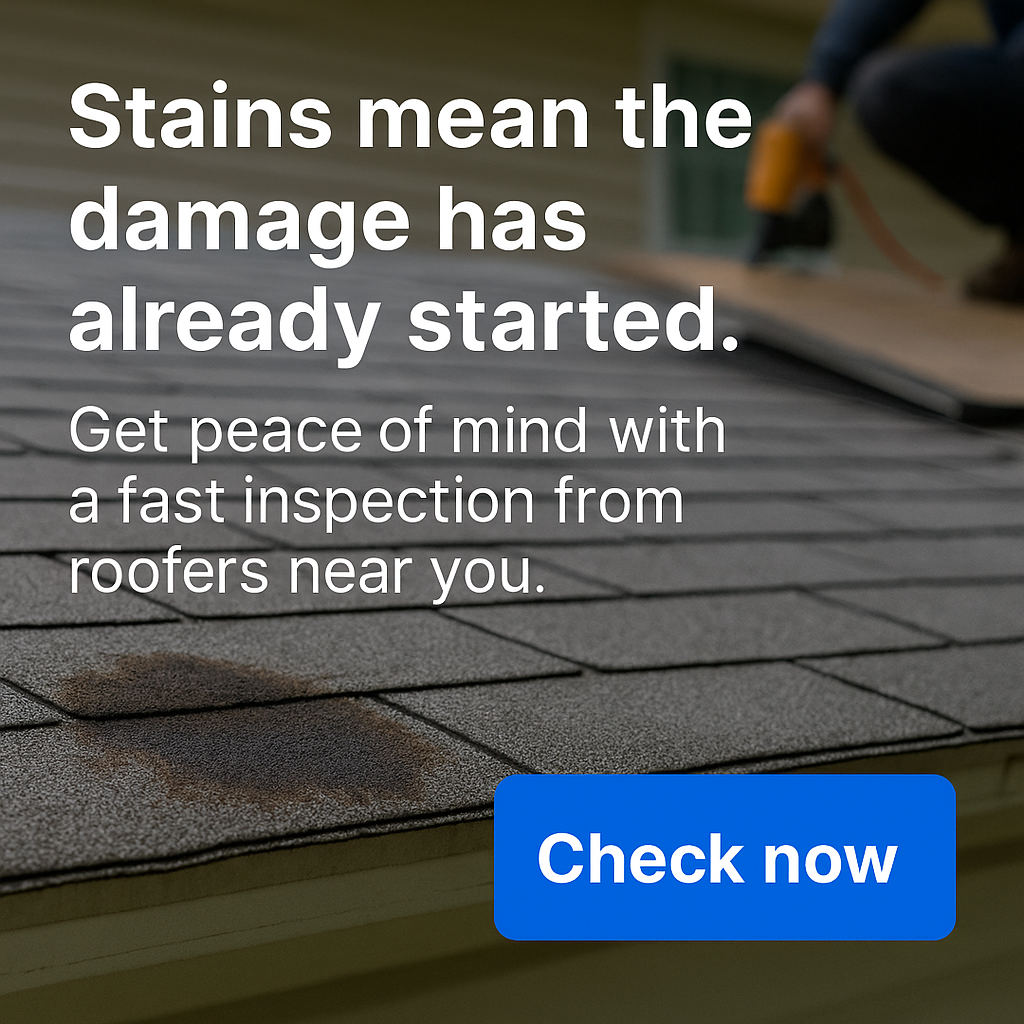Your roof might be aging faster than you think.
Even if it looks fine from the street, small issues like hidden leaks, curling shingles, or granule loss could be silently damaging your home. Most homeowners don’t notice the warning signs until it’s too late.
Understanding how your roof naturally wears down—and spotting the early clues—can save you thousands in unexpected repairs.
A typical roof lasts 20 to 30 years, but factors like harsh weather, poor maintenance, and installation issues can speed up aging.
Rain, sun, wind, and snow can slowly break down your roof’s protective layers. And without regular inspections, even minor damage can spiral into costly problems.
Common Causes of Premature Roof Aging
A roof can last 20–30 years with proper care, but several things can dramatically shorten its lifespan:
- Weather damage: Heavy winds, UV rays, snow, and rain can break down shingles over time.
- Poor installation: Misaligned shingles or bad sealing can cause problems from the start.
- Neglected maintenance: Clogged gutters, missing flashing, or debris build-up can lead to leaks and rot.
And even if your roof was installed properly, time alone can be a silent enemy.
Sneaky Sign #1: Granule Loss on Shingles
Ever notice sand-like material in your gutters? That’s your shingles shedding protective granules. Without them, your roof is vulnerable to sun damage, leaks, and early decay.
What to do: If granule loss is increasing, don’t wait. A professional inspection can determine if repair—or full replacement—is needed.
Sneaky Sign #2: Curling or Buckling Shingles
Shingles should lie flat. If they’re curling at the edges or buckling upward, it’s a red flag. This can let in moisture and expose your home to internal water damage.
Did you know? Poor attic ventilation is a major cause—trapped heat warps the shingles from below.
Wondering if your roof qualifies for an inspection? Enter your ZIP below to check local availability.

Sneaky Sign #3: Leaks and Water Damage
This one’s obvious—but the damage it causes isn’t always visible. Even a tiny leak can lead to mold growth, drywall issues, and weakened insulation.
Tip: Check your attic after storms. Musty smells, dark spots, or dampness are all early warning signs.
Sneaky Sign #4: Increased Energy Bills
If your heating or cooling costs are creeping up, it might be your roof. Damaged shingles and poor insulation let air escape—forcing your HVAC to work overtime.
What Happens If You Ignore These Signs
- Water intrusion
- Mold and mildew
- Structural rot
- Major repair costs
- Lower home resale value
Small signs today could mean $10,000+ in repairs tomorrow. It’s not worth the risk.
How to Catch Roof Damage Early
Inspect your roof at least twice a year (or after major storms)
Look for missing shingles, dark spots, sagging areas, or gutter debris
Check inside for ceiling stains or musty attic smells
Most importantly: Get a professional inspection if you’re unsure
Want Peace of Mind?
If you’ve seen any of these signs—or just want a second opinion—it’s worth checking your roof now. Many homeowners are surprised to learn that free or low-cost inspections are available in their area.
Don’t wait until small signs turn into expensive repairs. Get your free roof inspection from trusted pros near you — click below to get started.
